Fueled by a love of her language, culture and people, one Basque woman has inspired many and found a home from home among the local Derry community.
*****
“To do something properly, you must love it.”
It’s a wonderfully simple, and yet profound observation that Oihana Beraza – an English teacher from Bilbao – holds dear.
A woman of endless energy, enthusiasm and vision, Beraza has for the last six years been a life force running through two countries, both of which she now regards as home.
During the past four weeks, thirty seven children from the Basque town of Bilbao and province of Bizkaia have experienced life in local Derry communities, residing with host families in Bellaghy, Maghera, Castledawson and Magherafelt. In GAA-speak, it’s got a Féile-like feel to it, only on an international scale. The thinking is remarkably similar with lifelong bonds, memories and experiences all up for grabs.
The Ehire (www.ehire.eus) programme – a combination of ‘Eire’ and ‘Euskal Herria’ (The Basque Country) – is the brainchild of Oihana Beraza and has grown in popularity and scope since its formation in 2010.

Its aim? To provide Basque children with the opportunity to improve their language skills through participation in sporting and other cultural activities. Rugby, tug-of-war, golf, archery and fishing are all on the to-do list for the group, as is GAA.
“The GAA is part of the culture of Ireland so the kids take part in Gaelic sports during their time here,” says Beraza. “Before we start the programme we talk to them about the games, about Croke Park, about the history, so that when they try the games, they appreciate the importance of them.
It’s hard not to be impressed with the professionalism and philosophy of the programme which is now all-consuming for Beraza once her school term ends. In discussion, she can go from the fine detail – interviewing families, booking transport, organising insurance and logistics for day trips – to the big picture in the blink of an eye.
Like on the importance of learning English, for example.
“If you want to survive as a country, why not open your culture and the way you are to the world?” she poses, before continuing to explain:
“At the minute the main language of the world is English. It might be German or Chinese in the future but for now, it’s English. And why not be able to move freely all over the world, speaking English but also being Basque?
“I tell our kids that we are coming here to learn the language, the culture, but we also never forget where we come from.”
“We are Basques in Ireland.”
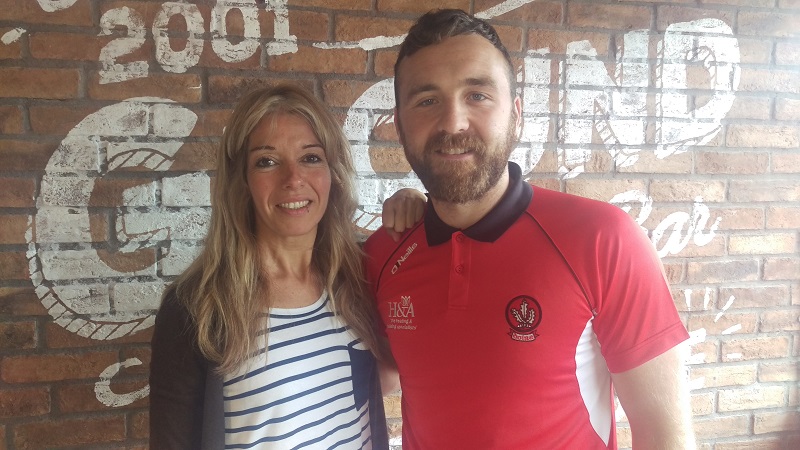
*****
“Basque and Gaelic Sports are two of the few traditional sports and games that act as social and community pillars in the regions in which they are practiced, either at home or beyond Europe. The strength of the two traditions and their resistance to decline should serve to help other traditional sports.”
~ Dr. María Teresa Linaza, Project coordinator, RePlay Project.
*****
It’s a gloriously sunny summer’s morning in Rossa Park, Magherafelt, and for almost forty Basque children, it’s their first taste of Gaelic games. Even with the emphasis on learning the English language through the participation in sports, there is some initial sorting out to be done.
“When you say football here, you mean Gaelic football!” exclaims Oihana.
“And when you want to talk about the other football, you say soccer. Our kids learned that quickly!” she laughs.
Adorned in the colours of their beloved Athletic Bilbao, the Basque children take part in GAA coaching and games sessions led by local club volunteers. All bases are covered: football, hurling and camogie.
If the cultural nuances of the naming of the games involving the big ball are tricky, then the separation of the sexes for the small ball game comes as something of a surprise to Beraza, as she explains:
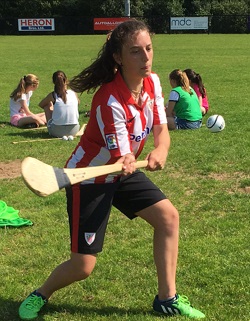
“They (the Basque kids) couldn’t understand why there is both hurling and camogie, for boys and girls. The girls wanted to play hurling and some of the boys, camogie. We don’t really have different games. You have feminine football in the Basque country, but it’s the same rules,” she states.
It’s certainly food for thought and an interesting perspective coming from a culture which places sport at its heart.
To understand the mind-set of the Basques toward sport and its place within the hearts and minds of their people, you have to understand Athletic Bilbao.
Not far from the breath-taking sight that is Guggenheim museum along the Nervión River in Oihana’s hometown, stands another iconic building. The magnificent new San Mamés Stadium, opened in 2013 and located a stone’s throw from its predecessor – known locally as ‘La Catedral’ (The Cathedral), and which housed Athletic Bilbao from 1913-2013, – now regularly hosts 53,000 in support of the local soccer team.
In a professional game now largely dictated by globalisation, ludicrous transfer fees and salaries, Athletic Bilbao stand for more. FC Barcelona may tend receive most of the plaudits which are going for their commitment to in-house development of players and being the pride of their region, but since 1912, Athletic Bilbao has operated a Cantera policy, meaning that their team consists solely of players that have come through the club’s youth academy or Basque players recruited from other clubs.
The GAA parallels are clear and don’t end there.

“In every Basque village or town – even if they are very small – you have a city hall, a church, a bar and a Fronton, where handball is played,” explains Oihana. Replace the Fronton with a GAA pitch and you have the makeup of most Irish towns and villages.
Pilota is the name for a group of court sports using a small ball, the hand, bat or basket against a wall, known as a Fronton. Thought to have origins dating back to the 1700’s, the ancient traditional games of the Basque country are now thriving amongst its youth.
“It’s a very old sport,” says Oihana, “but it’s coming up big again. Kids in Basque schools play and practise handball.”
And not just in schools either. One of Bilbao’s hidden gems lies underground with Norman Foster’s award winning architectural masterpiece ‘Bilboko metroa’ – a metro for the city – linking all parts of Bilbao, both new and old.
“Even though you might think traditions would die in large urban centres like Bilbao, we still have two frontons in Casco Viejo, the old part of the town,” Oihana remarks. “Kids will go there for a couple of hours per day and train.”
With the old courts and the ultra-modern black slate-clad, Frontón Bizkaia – designed to showcase the national game to 3,000 people in an indoor seated arena – pilota is literally placed centre stage in the country’s largest urban centre. It’s the equivalent of having skills walls for hurling or football dotted around Belfast city centre, or more locally, Derry City or Coleraine; perhaps more food for thought from the Basque example?
*****
“Aurrera begiratzen ez duena, atzean dago / Those who don’t look forward, stay behind”.
~ Basque proverb
*****
The tendency to travel for many generations of Basques, like the Irish, has meant a dissemination of their culture, a tradition now enhanced by Baraza’s programme. She is the latest in a long line of Basque cultural ambassadors.
“In Galway, or above Connemara …, the Sky Road, I saw a Fronton there,” she recalls. “When I checked it out, I discovered that during Franco’s time, when people had to leave the Basque country, many of them came to Ireland and particularly to the Galway area. I read before that they have discovered a high percentage of Basque DNA in the region, which explains the Frontons.”
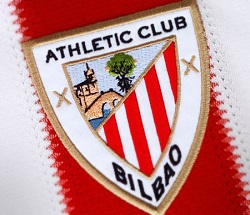
However, it hasn’t always been one-way traffic. Perhaps more by accident than design, the introduction of British port workers to the city over a century ago helped change the sporting landscape of the region as a whole.
Oihana explains:
“When football was created in the whole Spanish estate, the provinces all had their own teams with people from those places playing for the team. It was the mixing of British port workers and local kids which brought about the creation of the local football team, which is now Athletic.”
The workers, most of which came from Sunderland, brought the game of soccer and also their club colours to the Basque city. It was the beginning of a rich history in the one hundred years since the club’s formation.
“[In the beginning] Bilbao were winning everything, every championship”, exclaims Oihana. “Franco didn’t like that so he then allowed three to five ‘foreign’ players in every team. So Real Madrid started getting more players and more victories. Eventually it became more than five but Athletic kept with tradition.
“In Athletic, because the Basque country is divided between the Spanish and French estates, players with French passports can also play. Also, if your parents are Basque and you are part of the Cantera, you’re allowed to play.”
The analogy with GAA clubs, parish rules and county boundaries isn’t lost on the woman who, in her own words, still misses ‘Ireland and Dublin each day I’m not there’.
“I heard when I lived in Dublin about the idea of having two GAA teams in Dublin. I don’t know the full story though.”
She laughs, knowingly.
*****
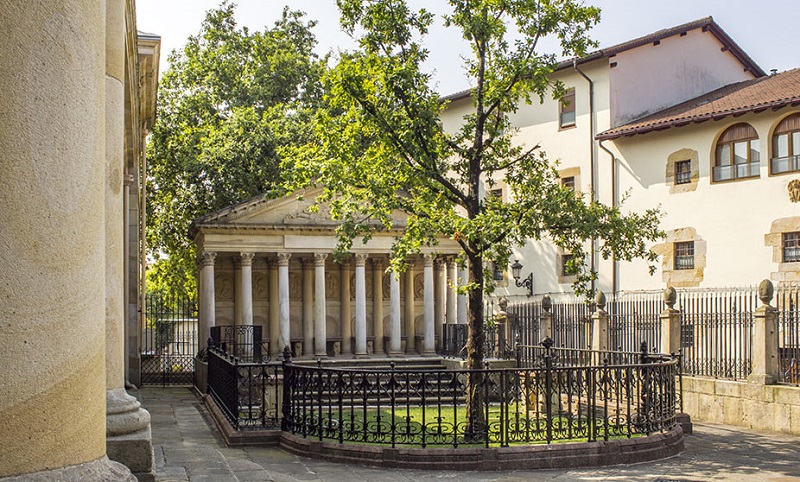
The symbolism of the Oak as one representing pride of place is nothing new to Derry people.
However, for the group of young Basque people residing in the county during July, it has been a symbol of a home from home for the past four weeks.
Gernikako Arbola (the tree of Gernika in Basque) is an oak tree which is a source of pride for the Basque people as a whole. Surviving the bombing of the town of Guernica in 1937 during the Spanish Civil war – an event immortalised in the painting by Picasso of the same name – the old tree and its dynasty is a modern symbol of the longevity and renewal of traditional freedoms and culture dating back to medieval times.
But for Oihana, Maghera was where she first learned of the shared symbolism.
“I lived in Dublin and I didn’t know much about the north, about Derry, until I started doing this (programme) in Maghera.
“Our kids all wear their football tops, Athletic tops, because they come from Bizkaia, my province. We take kids from all over the Basque country but this year the programme was entirely filled with kids from Bilbao and Bizkaia.”
“It came about because five years ago I saw a Derry football top in Derry City, the red and white vertical stripes and I thought ‘there is someone wearing the Athletic top. It’s very similar. Then in Maghera I saw the Oak Leaf symbol of Derry GAA – like the tree of Gernika – and the connection was made.”

And so Ehire was born, and continues to grow year on year. With the learning of language through participation in cultural activities at its heart, Oihana Baraza’s vision has now become a reality.
“We have a saying in Basque that ‘a country that sings and a country that dances, never dies’,” she explains. “Especially singing. You have songs which were maybe never written down passed on through generations. Even though our country is divided, we’re still singing and we’re still dancing and keeping our traditions alive. We’re like the last Indians of Europe. Like Ireland.”
Alongside sport; dancing, singing and language are the pillars on which the Ehire programme is built.
“The structure of the Basque language is like Irish, the way the verbs are structured. The way you organise your sentences, it’s a way of expressing your personality. I don’t know if I explain that very well but the Basque personality is a strong personality and I see that with the Irish too.”
For a people whose origins can be traced back further than most, putting down firm and lasting roots is nothing new.
Three years ago when they were remaking some public gardens in Maghera, the travelling party of Basque children took part in a horticultural exercise to assist the ongoing work.
“What we wanted to do was to plant an oak with a plaque to say it had been planted by Basques,” explains Oihana. “But they couldn’t get us the oak for there. It didn’t suit. However, we still planted trees there, two lines of three trees.”
“It remained something that we’d wanted to do,” she continues, “to plant an oak in Derry as Basques.”
Three years later, and as a lasting footnote to their adventures in 2016, Oihana Bazara and thirty-seven Basque children finally got their wish with the transplanting of a young Oak tree in the grounds of Rossa Park, Magherafelt.
The new tree is a symbol of an ongoing journey, one ‘from home to home’. Or as they now say locally,
“Etxetik Etxera!”

Margaret McLaughlin

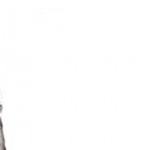
Comments